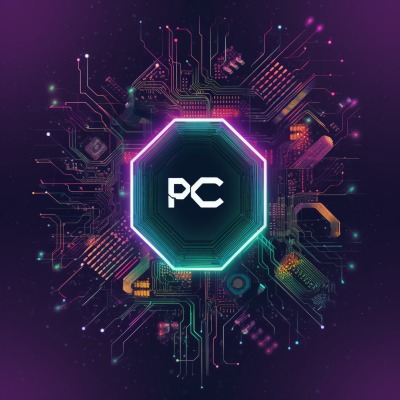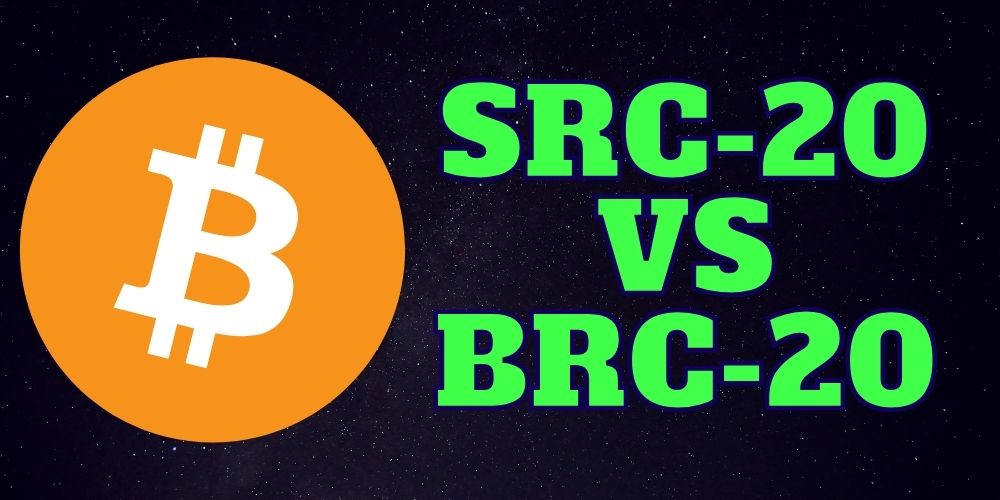The cryptocurrency landscape is continually evolving, and this extends to the ways tokens are developed on the Bitcoin network. Two standards have gained traction within this space: SRC-20 and BRC-20. Understanding how they differ is essential for both knowledgeable investors and curious onlookers.
You can buy Bitcoin BTC on top exchanges like MEXC, Gate.io and KuCoin using our VIP referral links with additional bonuses.
Fungibel Tokens on Bitcoin
While Bitcoin wasn’t initially designed for complex token functionality, innovations like Bitcoin Ordinals and sidechains (such as Rootstock) have unlocked new possibilities. This sparked the rise of two significant token standards aiming to expand Bitcoin’s utility:
- BRC-20: Mimicking the familiar ERC-20 standard on Ethereum, BRC-20 offers token creation on Bitcoin in a similar vein to what developers experienced on other chains. BRC-20 tokens have gained some popularity but don’t always leverage Bitcoin’s core strengths. Read more about BRC-20 and Ordinals here.
- SRC-20: Taking a different approach, SRC-20 aims to build token frameworks tailored to Bitcoin’s unique advantages. It leans on concepts like Ordinals to inscribe token logic in a way more closely aligned with Bitcoin’s native operations.
Key Differences Between SRC-20 and BRC-20
| Feature | BRC-20 | SRC-20 |
|---|---|---|
| Underlying technology | Often sidechains/bridges | Ordinals or sidechains like RSK |
| Design Philosophy | Mirrors other smart contract chains | Embraces Bitcoin’s unique architecture |
| Potential Security | May inherit risks from external elements | More directly relies on Bitcoin’s core security |
| Transactional Nature | May operate independent of Bitcoin blocks | Transactions interwoven with Bitcoin blockchain |
Bitcoin Token standard
The “better” standard depends on your needs and outlook on Bitcoin’s future. BRC-20 may feel more intuitive to developers porting applications from other chains. In contrast, SRC-20 prioritizes alignment with Bitcoin’s decentralized and secure ideals, though it’s still at an early, experimental stage.
Notable SRC-20 Projects
As with the previous blog post, here are some noteworthy SRC-20 projects to keep an eye on (DYOR – Do Your Own Research – remains crucial!):
- Bitcoin Stamps
- ORDI
- Lightning Network Tokens
- Tokenized Real-World Assets
Potential Top Trending SRC-20 (or related) Tokens
- ORDI: ORDI bills itself as a truly native bitcoin stablecoin. If they achieve that goal, it’s a massive piece of the puzzle to unlock DeFi-like activities using SRC-20 tokens.
- Why trending: Successful stablecoins are linchpins in other blockchains; the demand exists on Bitcoin.
- Bitcoin Stamps: Stamps leverage Ordinals to inscribe images, potentially other data, into Bitcoin transactions. Think of them as early prototypes for unique tokens or “Bitcoin NFTs”.
- Why trending: Controversy, uniqueness, and the potential they represent for digital ownership drive attention.
- ALEX: Built on Stacks (which leverages Bitcoin security), ALEX positions itself as a Bitcoin DeFi enabler. It promises lending/borrowing with tokenized Bitcoin as collateral.
- Why Trending: DeFi is a massive sector on other chains, the ambition to replicate it on Bitcoin is alluring.
- Gamma Tokens: Focused on the Stacks network, Gamma offers a platform to wrap “Bitcoin representations” as tokens. These could power apps requiring tokenized assets.
- Why Trending: Wrapping is a proven utility—extending it to Bitcoin assets in various forms has clear use cases.
- STX: Stacks’ native token, STX, isn’t strictly SRC-20 but is fundamental to Bitcoin-adjacent dApps built on Stacks.
- Why Trending: Successful Bitcoin DeFi or NFT applications likely drive demand for STX, increasing its visibility.
The Verdict
The world of Bitcoin tokens is still emerging. Both SRC-20 and BRC-20 have the potential to shape Bitcoin’s role in the decentralized finance and broader token landscape. As these standards mature, one may gain more dominance, or they may coexist to serve different niches. Time will tell, but as an informed observer, it’s worth studying both approaches to understanding the potential trajectories of tokens on Bitcoin.
P.S. Nothing here is financial advice. Purely educational purpose. Links are affiliate.


Leave a Reply